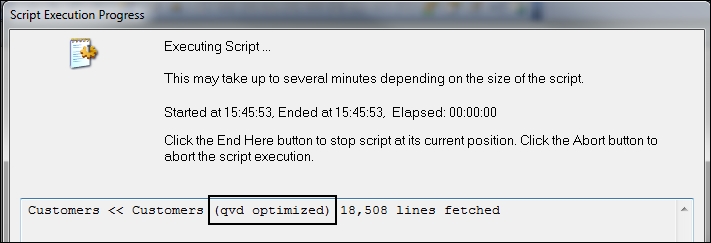In the previous section, we have stored data into QVDs. Now it is time to read or load from a QVD. QVDs can be read as a regular load or as an optimized load.
An optimized load is a super-fast load that occurs if no transformations occur or certain conditions are applied. An optimized load is indicated by the message in the script progress window.

The following conditions apply to an optimized load:
Reading data from QVD is faster than reading from a database. Once data is stored in the QVD, follow the next steps to read from the QVDs:
If not open already, open the QlikView desktop. Create a new QVD by using File | New. Save this file as
QlikViewEssentials_DataModel.qvw.Invoke the script editor by pressing Ctrl +...



